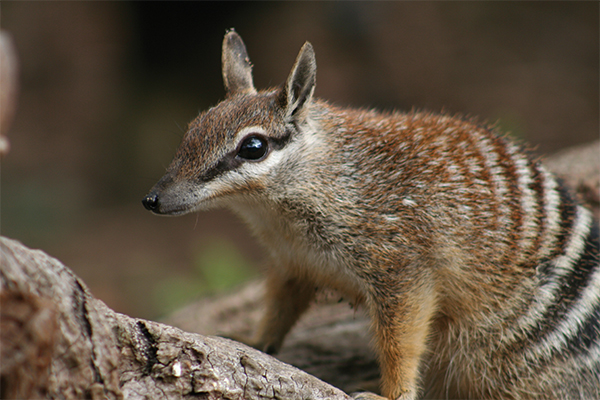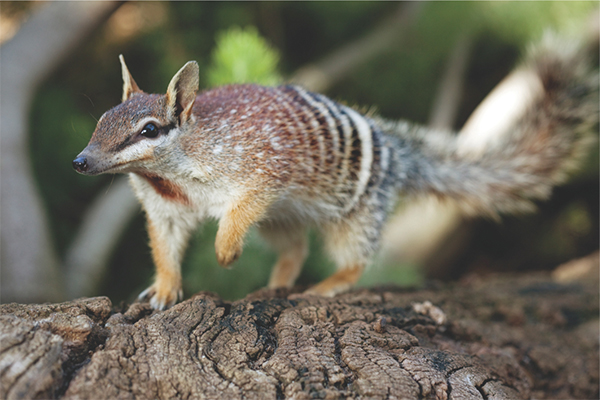A Year in the Life of the Numbat
Once widespread across southern Australia, the
Numbat is only found in small pockets of woodland in Western Australia.
Since 1987, Perth Zoo has undertaken a crucial role in saving the species from extinction, breeding over 300 Numbats for release into protected areas.
Breeding and caring for Numbats at Perth Zoo is a year-long journey that closely aligns with the Numbat’s natural cycles in the wild.
Take a look at what a year in the
Numbat breeding program looks like at Perth Zoo.
 Birak (December to January)
Birak (December to January)
The breeding season kicks off as the males' chests turn a striking red (sometimes as early as October), emanating a pungent scent from their sternal glands.
Males start looking for a mate when they’re about two years old, but females look for a mate at 12 months old. Mating is a time-sensitive affair, with females receptive for a mere 24 to 48 hours.
In sync with the wild, Perth Zoo ramps up its Numbat breeding program.
Male readiness is confirmed through checking for sperm in urine samples, and females receive an augmented termite diet for optimal breeding conditions.
Mating usually happens in the first half of January, but Numbats are polyoestrus and can have three oestrus cycles within the breeding season.
If they don’t fall pregnant from the first mating, there is opportunity to mate as late as February.
The pregnant Numbat gives birth to up to four joeys after just 14 days and carries them around in her pouch.
 Bunuru (February to March)
Bunuru (February to March)
Numbat joeys might also be born during Bunuru, their tiny bodies measuring just 6mm at birth—about the size of a grain of rice.
They’re completely hairless and don’t look like a Numbat at all.
As the breeding season concludes, males retreat to their territories, mimicked by separation at the Zoo.
Zookeepers check the females’ pouches for joeys.
Pouch checks take place three times after birth: at two days, 8 weeks, and when the joeys are deposited into their underground chamber in July (when they look more like Numbats).
This is just to check that everything is going according to plan.
Djeran (April to May)
During Djeran, pouch young resemble large jelly beans.
Both in the wild and at Perth Zoo, Numbats adapt to the cooler days by being more active during the midday sun, ensuring they’re foraging when termites are active so they can eat as many as possible.
Makuru (June to July)
Visible on their mother’s teats, young Numbats grow too large to be carried.
In both wild and zoo settings, mothers deposit their young into burrows or hollow logs.
Mum dashes out to feed during the day and returns at night to nourish her joeys.
Djilba (August to September)
As the weather warms up, Numbats seek shade during the hottest part of the day, feeding in the morning and afternoon.
Emerging from burrows, young Numbats learn to eat termites.
At Perth Zoo, they also start to feed on a special diet to prepare them for eventual release.
 Kambarang (October to November)
Kambarang (October to November)
The joeys explore their surroundings, spending more time away from mum.
By season’s end, they are independent, leaving to find their own patch of forest.
In preparation for release, Zoo joeys are microchipped, weaned two at a time, and separated from their mothers and each other, mirroring their wild counterparts.
Preparations for the next breeding season commence, which includes bringing new Numbats from the wild and matching up pairs for breeding.
Birak (December to January)
Zoo Numbats earmarked for release are fitted with radio collars and sent to new wild habitat, which might include sites in Western Australia, South Australia, or New South Wales.
They are monitored to gauge their survival.
Meanwhile, the breeding cycle starts again.